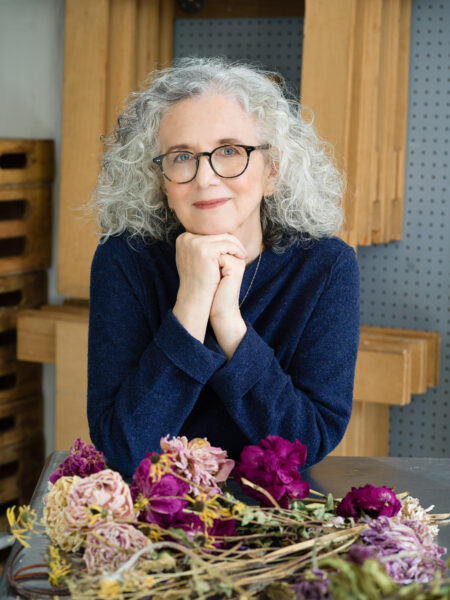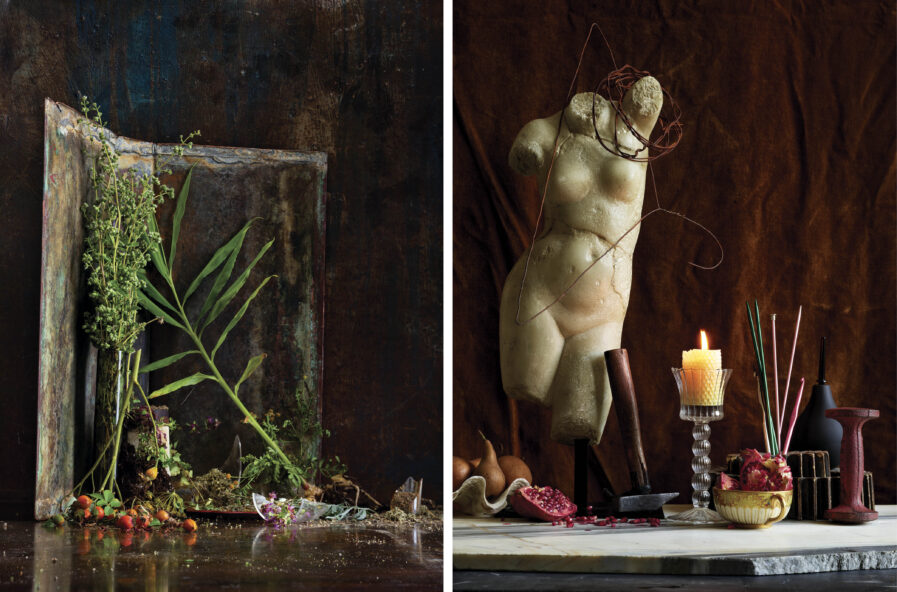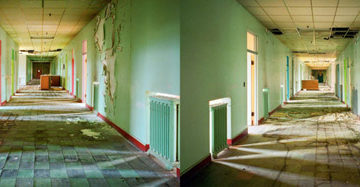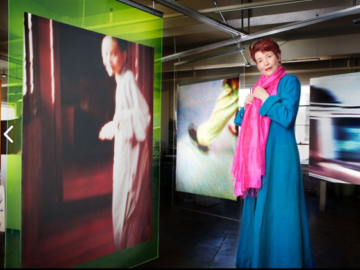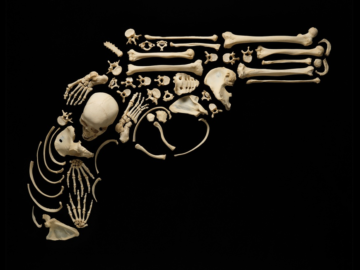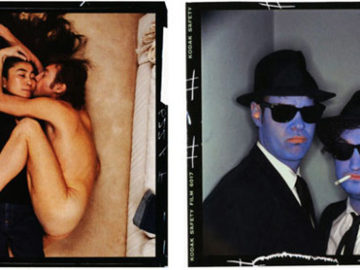Renowned for transforming ordinary edibles into stunning visual art, Beth Galton‘s photographic style captures the beauty of everyday simplicity. With a keen eye for texture, color, and composition, her minimalist approach elevates the common to the extraordinary. Her work, often characterized by a neutral backdrop and subtle lighting, focuses on the natural appeal of food, making it the undeniable centerpiece of each shot. In this Graphis Journal edition, we delve into the world of this celebrated photographer exploring the creative mind behind these mesmerizing still life compositions. Join us as we uncover the inspirations, techniques, and artistic journey through a Q&A with Beth Galton.
Introduction by Sally Herman, Freelance Art Director & Creative Director
One of the distinct joys of working with Beth Galton is her ability to approach every project with curiosity. Couple that superpower with 30+ years of this practice, and there is no concept that she does not make better, more rounded, more complete. The experience of collaborating with Beth on commercial projects has been a pleasure for her thoroughness, professionalism, and quirky good nature. Yet studying her work over time has been a master class in the importance of developing and maintaining a strong personal practice. Beth’s fine artwork informs her commercial work and vice versa. An excellent blueprint for a creative life well-lived.
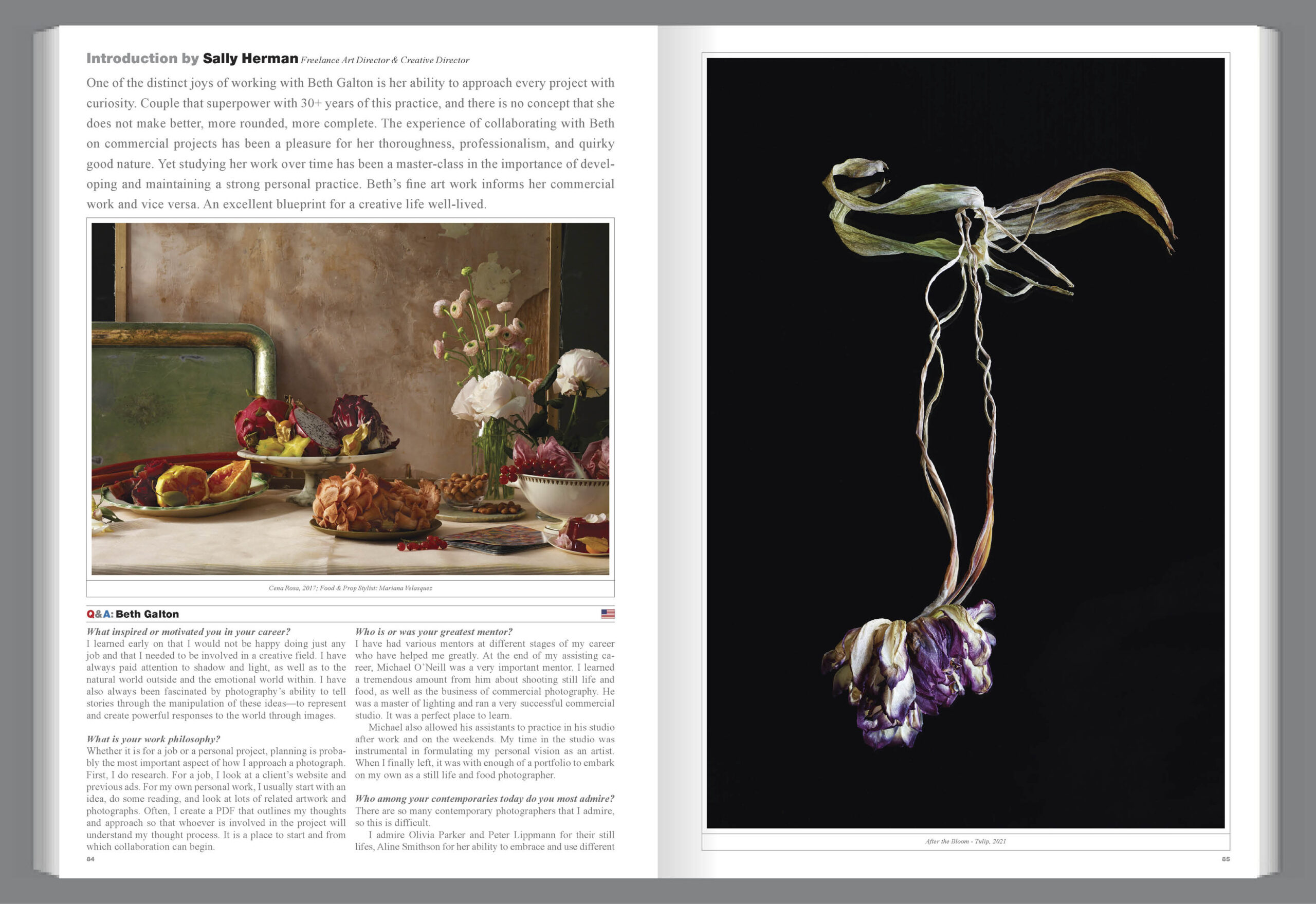
What inspired or motivated you in your career?
I learned early on that I would not be happy doing just any job and that I needed to be involved in a creative field. I have always paid attention to shadow and light, as well as to the natural world outside and the emotional world within. I have also always been fascinated by photography’s ability to tell stories through the manipulation of these ideas—to represent and create powerful responses to the world through images.
What is your work philosophy?
Whether it is for a job or a personal project, planning is probably the most important aspect of how I approach a photograph. First, I do research. For a job, I look at a client’s website and previous ads. For my own personal work, I usually start with an idea, do some reading, and look at lots of related artwork and photographs. Often, I create a PDF that outlines my thoughts and approach so that whoever is involved in the project will understand my thought process. It is a place to start and from which collaboration can begin.
Who is or was your greatest mentor?
I have had various mentors at different stages of my career who have helped me greatly. At the end of my assisting career, Michael O’Neill was a very important mentor. I learned a tremendous amount from him about shooting still life and food, as well as the business of commercial photography. He was a master of lighting and ran a very successful commercial studio. It was a perfect place to learn. Michael also allowed his assistants to practice in his studio after work and on the weekends. My time in the studio was instrumental in formulating my personal vision as an artist. When I finally left, it was with enough of a portfolio to embark on my own as a still life and food photographer.
Who among your contemporaries today do you most admire?
There are so many contemporary photographers that I admire, so this is difficult.
I admire Olivia Parker and Peter Lippmann for their still lifes, Aline Smithson for her ability to embrace and use different approaches to photography depending on what she is trying to communicate, Abelardo Morrell for his book Flowers for Lisa and his amazing Camera Obscura photographs, and Sandro for his ability to create thoughtful, conceptual portraits—I loved his John Malkovich series. There are up-and-coming photographers like Kennedi Carter, whose reportage photographs tell me so much about the world she is seeing. I am always looking at photographers—whether established or just starting out—who tell stories and show their vision of the world. I find these new points of view informative, inspiring me in my own photographs.
What is it about photography that you are most passionate about?
Photography is my vehicle to express my feelings and emotions and to tell stories visually.
Who have been some of your favorite people or clients you have worked with?
Oh, this is a very long list since I have been in the business for a long time! Recently, I worked on a pharmaceutical project for Havas Healthcare. The campaign, made for ARENA Pharmaceuticals, is called “Until It’s Done,” and it was all about storytelling. They wanted to feature their employees as a team of thinkers and doers. We created still life scenarios where an idea is jotted down on an object you would find in that place.For instance, we created a scene of an airplane seat with a tray table where the idea was written on a boarding pass. I loved the creatives: they had a great concept and encouraged my team and me to expand their concept and evolve it to create a fantastic campaign.
One of my favorite food clients has been Chipotle. Besides the fact that I appreciate their company’s ethos—healthy alternatives to fast food—Chipotle happens to have a very creative, smart, and clever design team who I loved collaborating with.
Another favorite project was for Smuckers with Saatchi and Saatchi. We created a library of images and GIFs for social media. What I loved about this project was the collaborative nature between the creatives, myself, and the team. If a GIF idea did not work, we collaborated to come up with an even better idea. It is always exciting to work with talented creatives who have the backing of their agency.
In the past, there were books like Martha Stewart’s Pies and Tarts, which allowed me to explore and develop an idea and style over six months of shooting. Most projects are done quickly, so working on a book over that period of time allowed me to explore lots of ideas.
Who were some of your greatest past influences?
In college, I fell in love with Edward Weston and his daybook. There was something about his still lifes that struck me at the time and still resonates with me today. I then discovered Atget, Steichen, and Emmet Gowen and loved the stories told in their photographs. When I moved to New York, I discovered Phil Marco and Irving Penn. They were both inspirational with their use of light and their ability to tell a story with objects.
What are the most important ingredients you require from a client to do successful work?
Collaboration, respect, and an appreciation for the work that my crew and I put into a job.
What inspired you to start your COVID diary? What was this project about?
This is an ongoing project about the Coronavirus. Like everyone, I have struggled with the magnitude of the pandemic and how it has insidiously spread and wreaked havoc around the globe. In March 2020, while the virus began its universal spread, my world became my apartment. I knew in order to keep safe, I would not be able to access my studio, so I brought my camera to my home and constructed a small set next to a window.
I began my days looking at The New York Times and The Washington Post online, hoping to find a glimmer of positivity. What I found and became obsessed with were the maps, charts, and headlines tracking Covid-19’s spread. I screen-grabbed and printed them out to see how the disease had multiplied and moved, soon realizing that each of these little visual changes affected millions of people. These charts were highly analytical, leaving out the immensity of the emotional toll of those affected. It became apparent that I had to use them in my photographs to help me process this devastating experience.
With time, photographs of the vast number of people who had died began to appear in the news. Grids of people’s faces filled the screen, most having passed alone without family or friends beside them. As the virus moved through our country, many of our political leaders refused to acknowledge the dangers that it posed, creating devastation and death. The incredible loss and the politics of this period were incorporated into these photographs. This series is a reflection of my emotions and thoughts through the past few years. By photographing this data and images, combined with botanicals, I intend to speak to the humanity of those affected by this epidemic. Motion in the images was utilized to help convey the chaos and apprehensions we were all experiencing. Once assembled, I now see that these images are a visual diary of my life with Covid-19, the politics of the time, and the way it has affected our everyday lives.
What was it like photographing during the COVID lockdown?
The whole process of isolating at home and taking photographs took me back to basics. I had a window, a camera on a tripod, and a few stands. I had no assistants and no studio with all my equipment. It became liberating and inspiring since I had to improvise to create my images.
Where do you seek inspiration?
I am fortunate to live in New York City and am always looking at artwork. My studio is in the middle of the galleries in Chelsea, not far from the Whitney. I am always looking at lots of art, from sculpture to paintings, and am particularly partial to 20th century painters. Relatively recently, I fell in love with the retrospective of Alice Neel at the Met and the Jasper Johns show at the Whitney. It is always interesting how photographers and artists tell their stories and express their visions.
Nature is also a great source of inspiration for me. Despite living in the city, you would be surprised at what I find. There are the most beautiful trees on the way to my studio, and I watch how the light falls on them as the seasons pass. I have collected three large bags of magnolia tree leaves this past fall from under the Highline. I use these objects in my photographs to help tell stories.
How do you define success?
For a project that I am hired for, I consider it successful when both the agency and client walk away happy with the imagery that we have produced for the project. For my work, I consider it successful when it conveys the idea I have been developing through light and composition. That said, I am never fully satisfied and am always thinking about how I might do something differently—the gift and curse of being a creative person!
Beth Galton is a photo-based artist with an educational background in the natural sciences and three decades of experience as a commercial and editorial photographer. These elements form the lens through which she explores the world. Beth’s path is rooted in a childhood animated with Marvel Comics, choral music, and the chaotic and composed meals she had at home and abroad. Drawn to the organic classicism of Edward Weston, her work is informed by her sensitivity to how light falls and shapes the subject. Beth’s fine art and professional work have won numerous accolades and have been exhibited extensively throughout her career.
Social: Instagram, Facebook, LinkedIn, X
